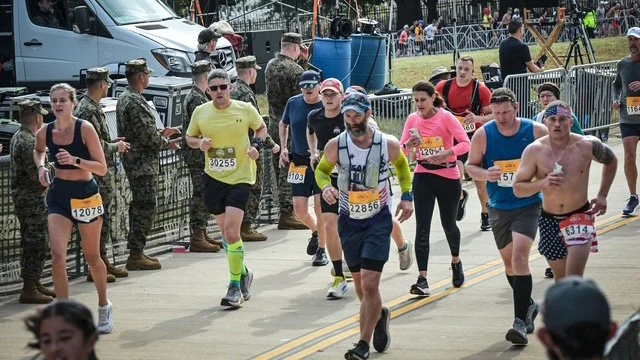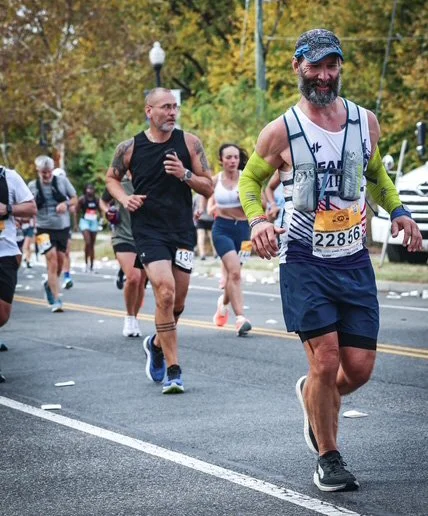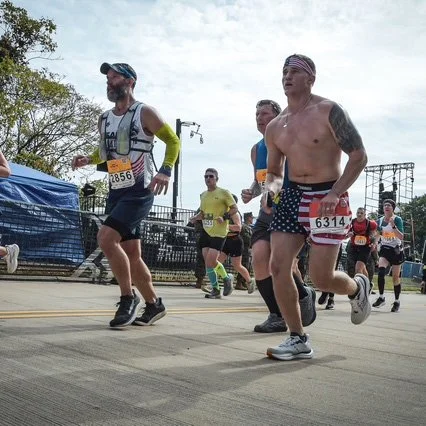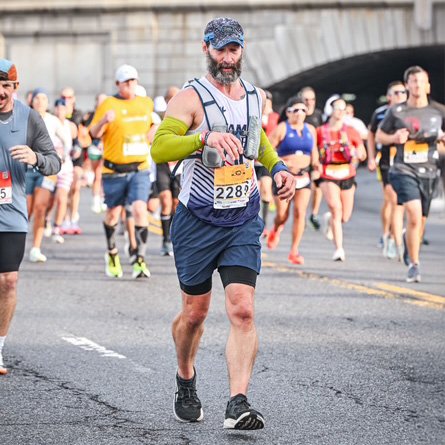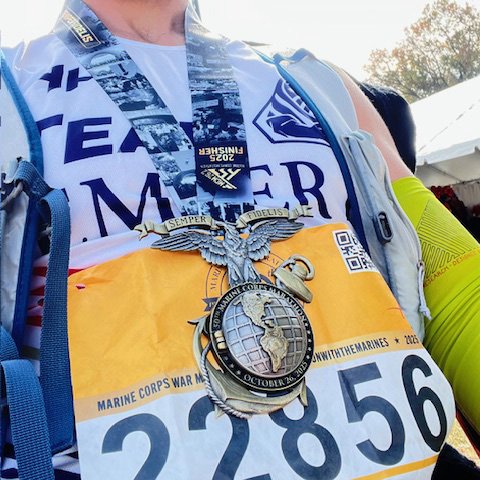What It Really Takes to Run a Marathon: Coach Steven’s Story
Most people see the finish line photo. The medal, the smile, the achievement. What they don’t see is everything that happens between signing up and showing up. For Coach Steven, finishing the Marine Corps Marathon this year was less about hitting a time goal and more about pushing through real-life adversity, injury, and an unforgiving training cycle.
The 4:28 Marathon That Meant So Much More
Steven had his eyes on a sub-4-hour finish. What he got was a 4:28 and a deeper understanding of what it means to follow through. On the surface, he looked ready. People see Coach Steven and assume he’s built to conquer anything. But underneath, he was running with a torn ACL on one side, a torn meniscus on the other, and a likely second ACL tear. No surgeries. Just consistent strength work, mobility, and a decision to keep moving forward, carefully.
The 4:28 Marathon That Meant So Much More
Steven had his eyes on a sub-4-hour finish. What he got was a 4:28 and a deeper understanding of what it means to follow through. On the surface, he looked ready. People see Coach Steven and assume he’s built to conquer anything. But underneath, he was running with a torn ACL on one side, a torn meniscus on the other, and a likely second ACL tear. No surgeries. Just consistent strength work, mobility, and a decision to keep moving forward, carefully.
“The body doesn’t always cooperate,” Steven said. “But with the right plan, you can keep working toward your goal.”
With his background and guidance from a trusted care team, Steven approached this race with intention. Every step of his training was built around reducing risk, managing pain, and moving in a way that supported his long-term health — not just race day performance.
Steven McHone and Dale Hinkley the night before the marathon.
Training Through Real Life
This wasn’t just about mileage. During his training block, Steven was balancing heavy personal responsibilities, family needs, running a business, and staying committed to a structured training plan. Most days started at 5 AM and ended well past bedtime. The plan stayed on the calendar, even when life made it hard to follow.
It was his first time using a formal training program, working with Dale Hinkley, as part of Team Semper Fi, a Marine Corps-affiliated group for athletes managing trauma or life challenges. His schedule was built around heart rate-based training, four runs a week, and weekly recovery protocols.
He made clear trade-offs to protect his progress:
No trail running or mountain biking
Weekly physical therapy with Amy and Charlotte of Mountain Wellness Physical Therapy.
Cold plunges twice a week
Foam rolling, leg swings, and warm-up routines before every run
Race Day: More Than Just the Miles
It took twenty minutes just to cross the start line. From there, Steven was surrounded by a moving crowd of 40,000. Aid stations were packed. The roads were covered with cups, spills, and energy gel waste. Hills appeared without much warning. A long wait at a porta-potty around mile 18 disrupted his pace and momentum.
“You think it’s just about running,” he said. “But the race teaches you how to adapt and stay calm when it stops going your way.”
Late in the race, he had hydration issues. The water available had a strong chemical taste, which made it hard to mix with his fuel. Still, he stuck with the plan and managed what he could in the moment.
His Fueling Strategy
Steven carried a pre-mixed Scratch Labs high-carb drink in a thick, paste-like consistency. He had extra powder in sandwich bags to mix on the go, but water quality toward the end made it difficult to stay on track. For this race, he opted to avoid all solid food and aid station snacks, relying only on the hydration and fuel he trained with.
One key lesson: Test everything in training. Nothing new on race day.
Mindset in the Final Miles
As the fatigue set in, Steven had to make the call to slow his pace from 9:30s to 10:30 or even 11:00-minute miles in the final stretch. Pushing harder might have meant missing the finish altogether. With ongoing injuries in play, the priority became staying steady and finishing on his feet.
“You have to know when to press and when to hold. There’s a difference between discomfort and damage.”
Advice for First-Time Marathoners
Steven shared a few key takeaways for anyone considering their first marathon:
Run with others if you can. Find a group or team on the same timeline
Work with a coach who can help you adjust when life gets messy
Do at least one shorter race with crowds to get a feel for race day dynamics
Expect disruptions. Training through real life takes flexibility
Keep your warm-up and recovery routines non-negotiable
Final Word
Coach Steven’s marathon wasn’t a perfect race, but it was a real one. Injury, family stress, long work
days — none of that paused the process. He adjusted, adapted, and kept moving.
That’s what we mean by intentional training.
At MPT, our coaches don’t just write the plans. They live the work. They face the same demands our athletes do, limited time, setbacks, responsibilities, and they keep showing up. Not chasing perfection, but building strength that holds up in real life.
Functional strength for daily living and mountain adventures.

